T.S. Eliot’s The Waste Land is one of the most iconic works of Modernist poetry, a broken and disjointed text that emerged from a moment when writers were trying to use new literary mediums and devices to understand life after the devastation of the First World War. Published by Leonard and Virginia Woolf in 1923 — the latter also explored similar themes in her writing— the text was the unlikely inspiration for Dior’s AW23 menswear show, tapping into creative director Kim Jones’ ongoing obsession with the Bloomsbury set. Last season, his show recreated Charleston Farmhouse in Sussex, the home of Duncan Grant and Vanessa Bell, connecting it via a real-life garden to Granville, Christian Dior’s childhood home in Normandy. This time around, the British designer asked his friends Robert Pattinson and Gwendoline Christie to perform The Waste Land for videos filmed by Baillie Walsh, which were projected onto giant screens lining the catwalk.
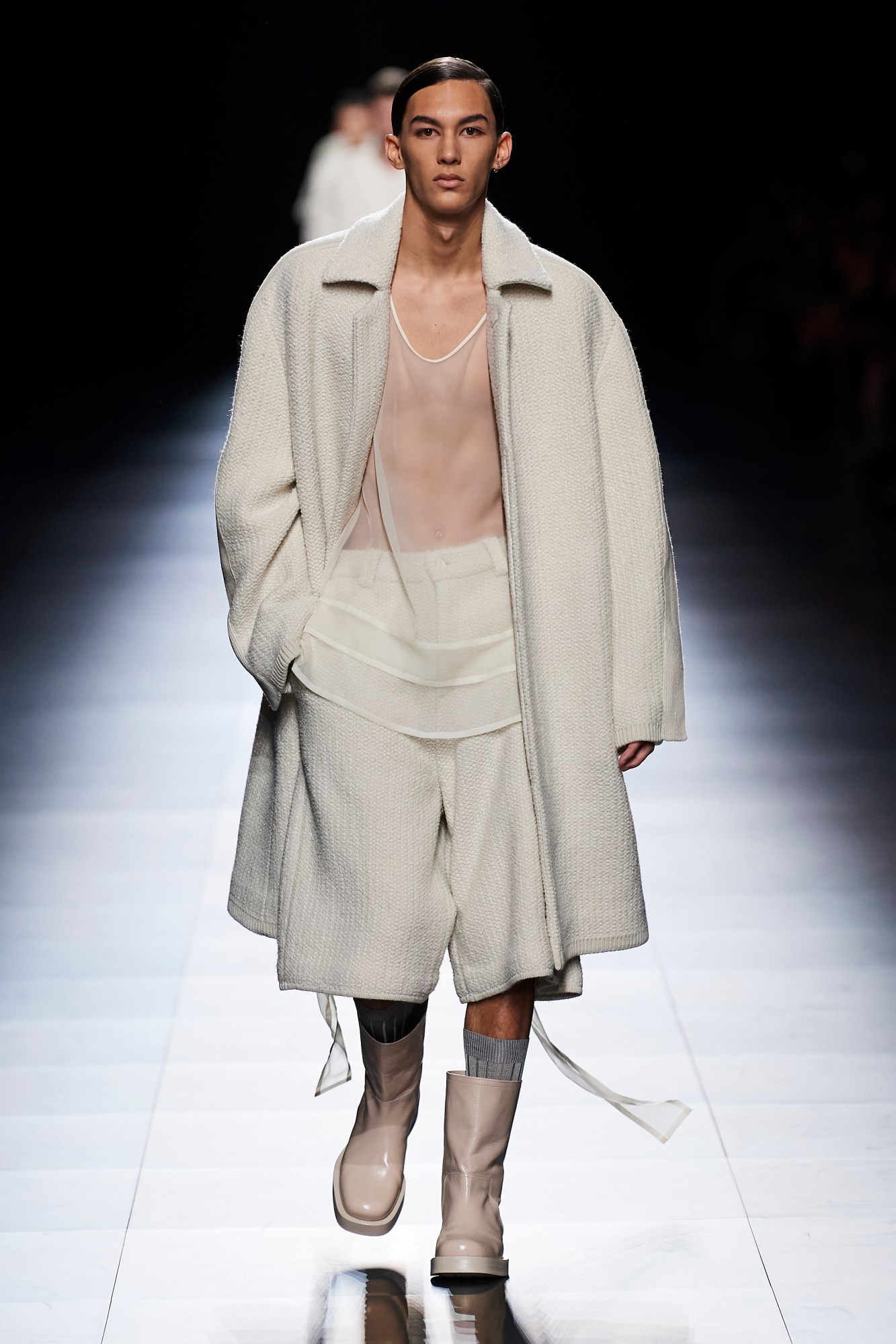
For any literary buffs in the audience, it was a reminder of how fragmented and difficult the text can be to understand — and also what a stark contrast the melancholic poem is to what Christian Dior did after his generation’s war. The Waste Land is bleak, hardly an uplifting text, and even violent at times. Monsiuer Dior, on the other hand, looked to the nostalgic warmth of his mother’s bustles and corsets to reshape femininity after WWII. Modernity versus Nostalgia — both Eliot and Dior were examining post-war life, two worlds apart. What links them is a sense of rebirth. “We wanted to look at the regeneration of the house after the death of Mr Dior, and its rejuvenation with Yves Saint Laurent, his chosen heir, drawing a parallel in literature, through imagery and themes in The Waste Land,” Kim explained in a statement. “It’s where an old world meets a new one, in change and in flux.”
The collection, as a result, sought to connect the dots between T.S. Eliot and a young Saint Laurent, who succeeded Christian Dior at the tender age of 21 in 1957. During his brief tenure, Yves introduced new silhouettes, like trapeze-shaped dresses and vented volumes, and was famously fired for showing a collection inspired by the black-clad Beatniks. Kim paid homage in this collection with an array of beautiful clean-lined cashmere tailoring, touches of leopard-motif fur, and jackets with wide decolleté necklines that framed layers beneath. A muted palette of urbane greys, dove-white and earthy browns hinted at the cityscapes of London and Paris. The bookworms in the audience will have recognised references to passages in the poem, too: Dior-ified wellies, patent leather raincoats with slashed sleeves, Aran fisherman’s knits and even a couple of inflated life jackets over buttoned-up shirts that seemed to echo Eliot’s allusions to drowning in a river and the final passages that emphasise the importance of water in restoring life to earth.
In fact, the theme of water — from the Thames to the Seine, rain, fluidity, clarity — could be felt in the silhouettes that were slightly more languid than usual, and in the diaphanous trails of fabric that fluttered from the backs of shirts. In lieu of Dior’s wasp-waisted Bar jackets were more slouchy shapes, knee-length skirts and sweaters with toga-like drapes over one shoulder. The lack of logos and embellishments was noticeable, too. One thing was clear as water: this was perhaps one of Kim’s best collections, personal, heartfelt and distinctly British.
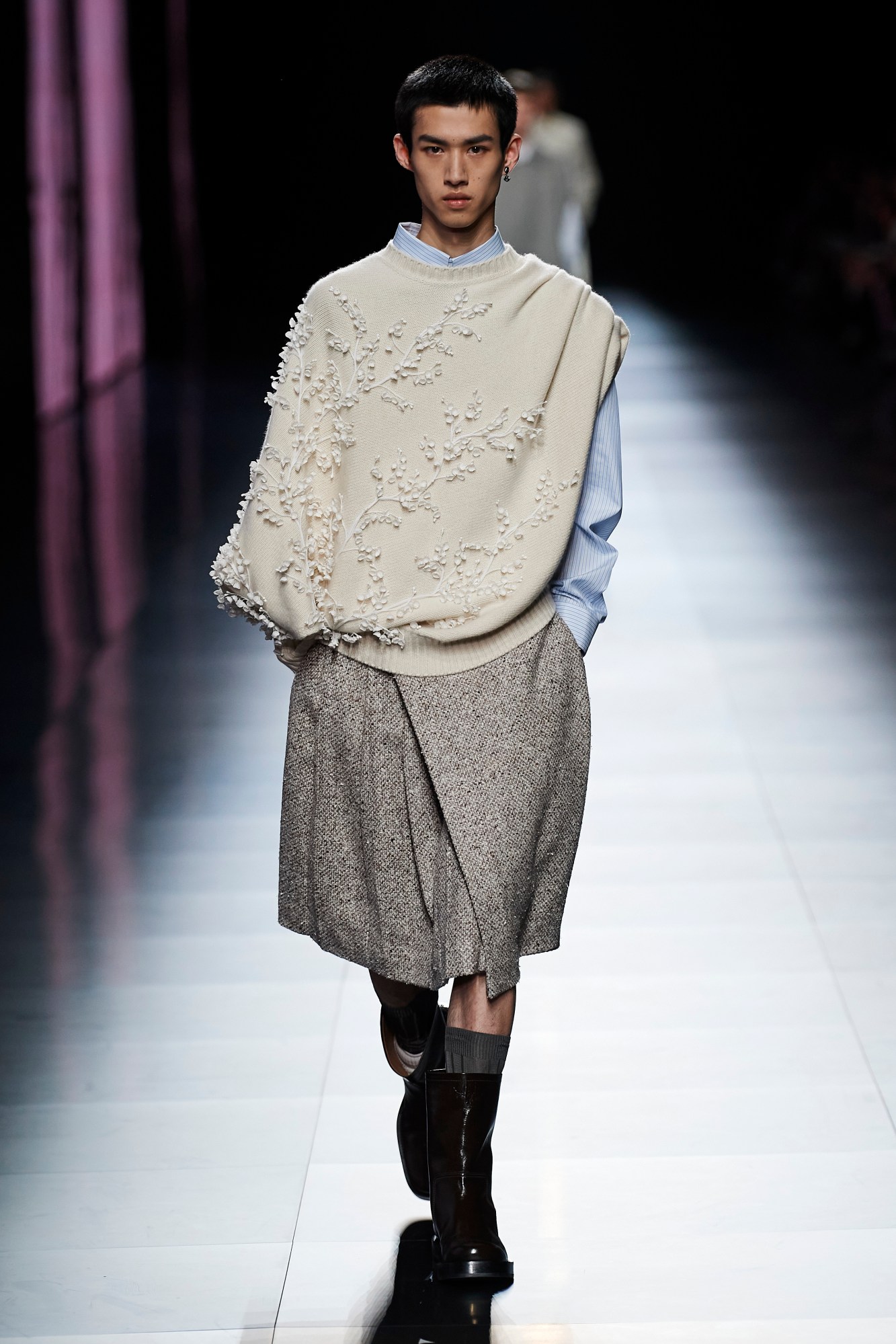
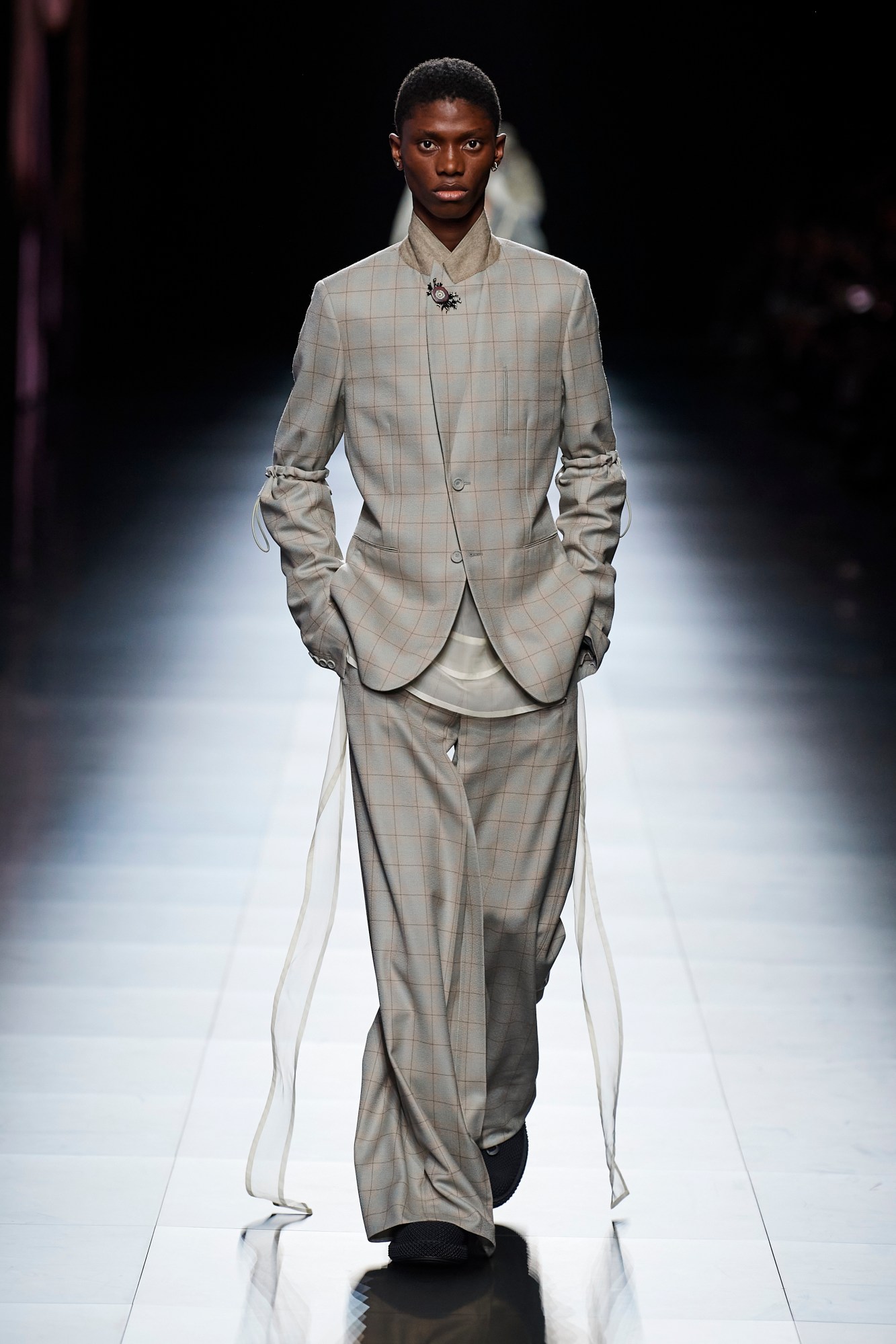
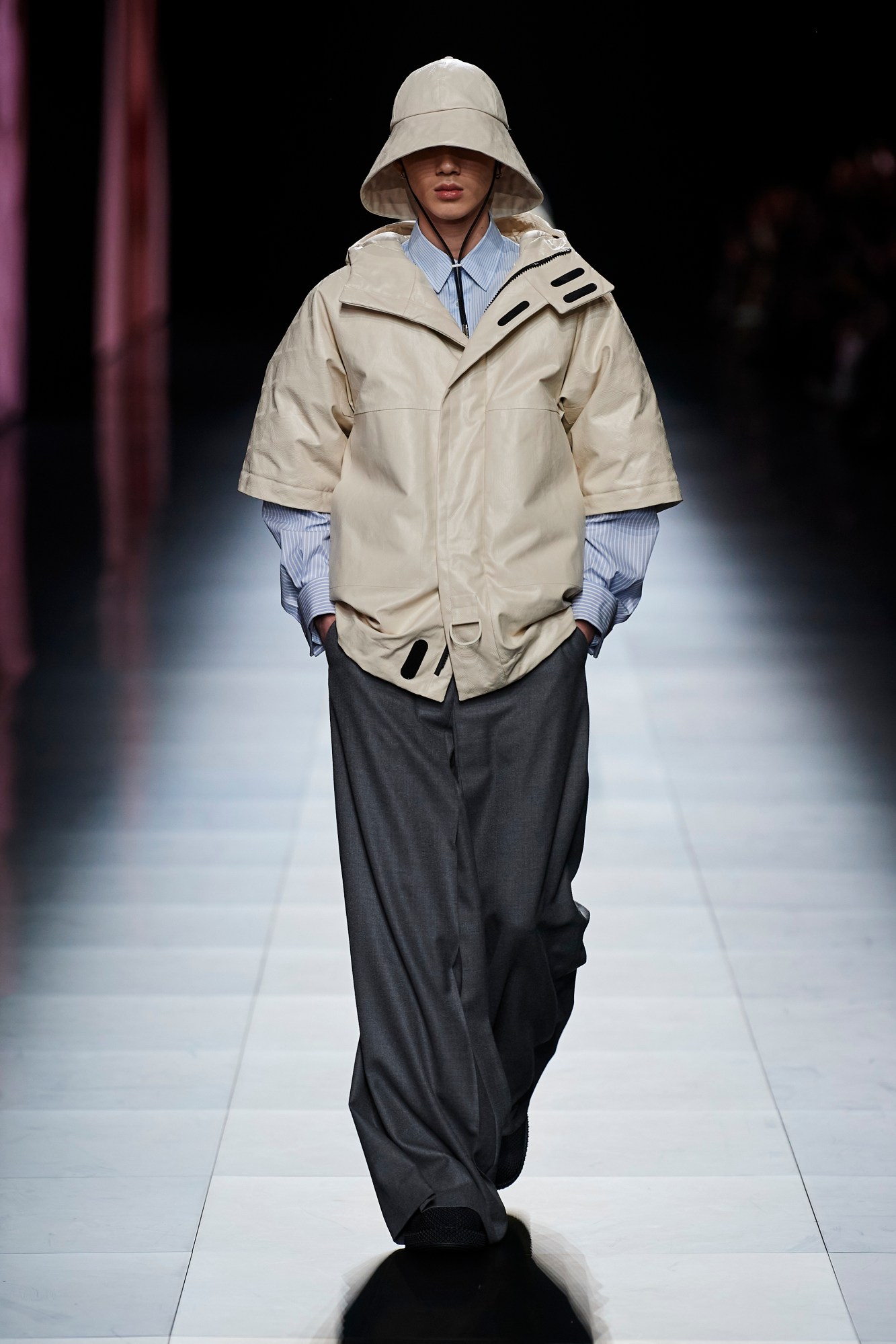
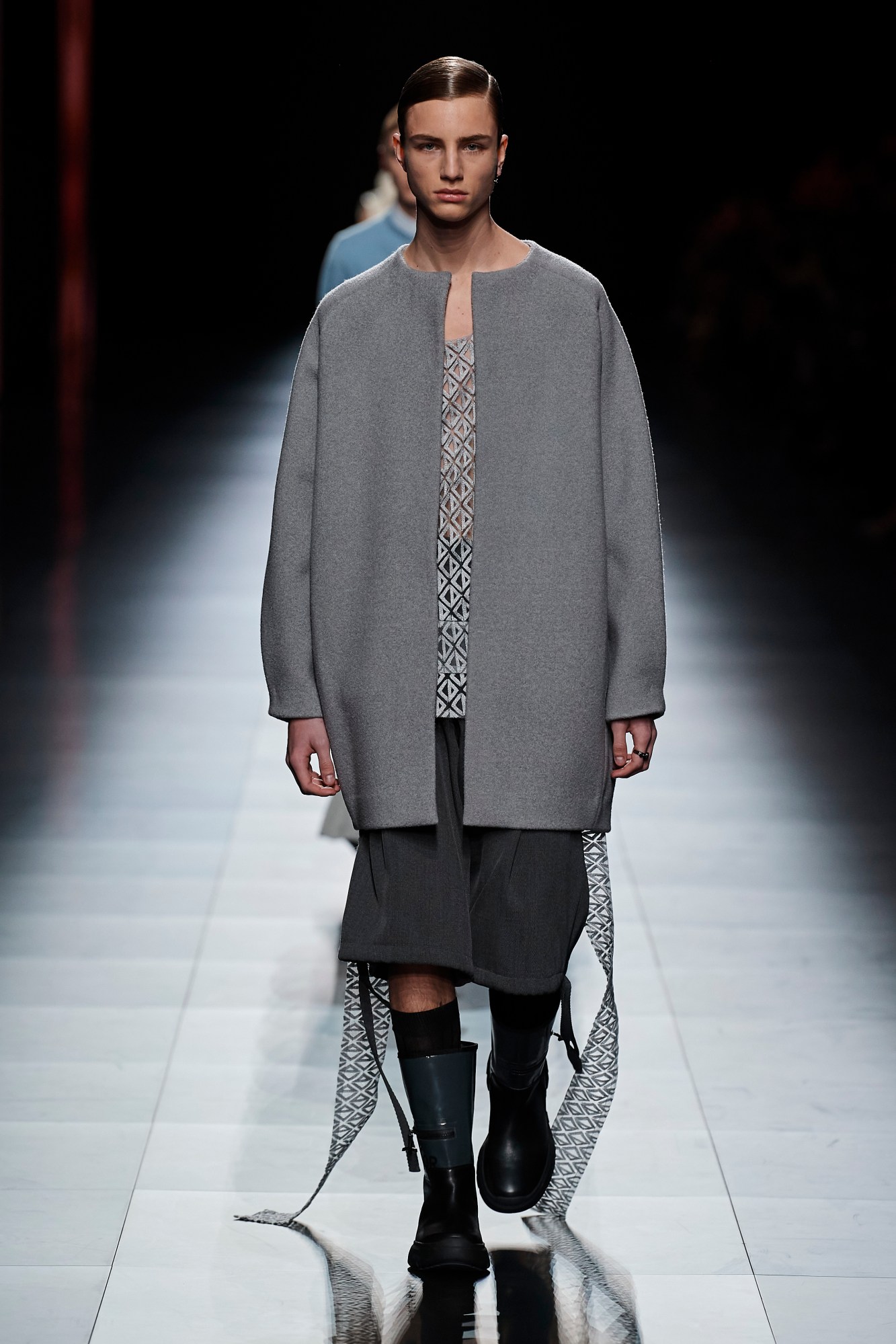

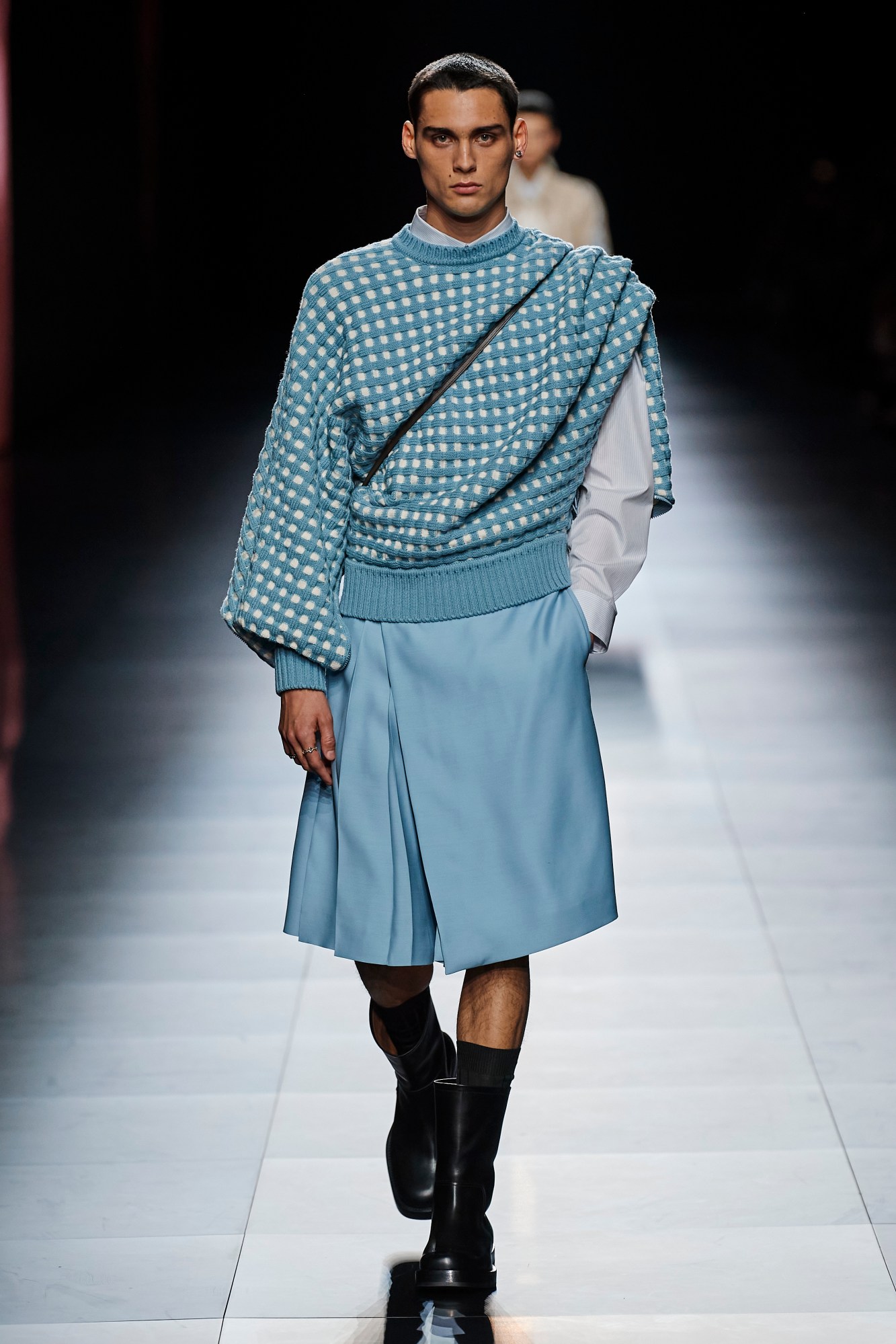
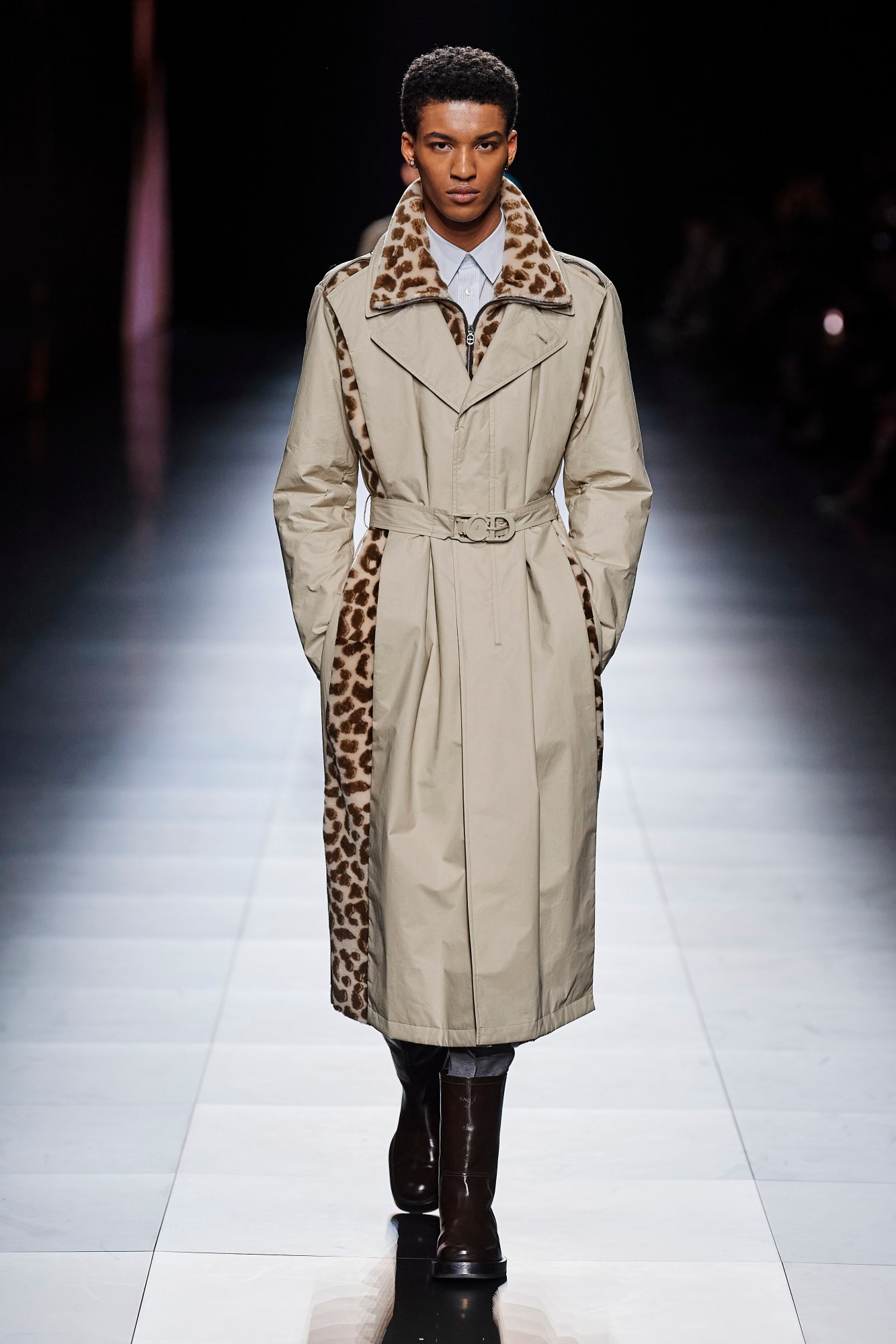


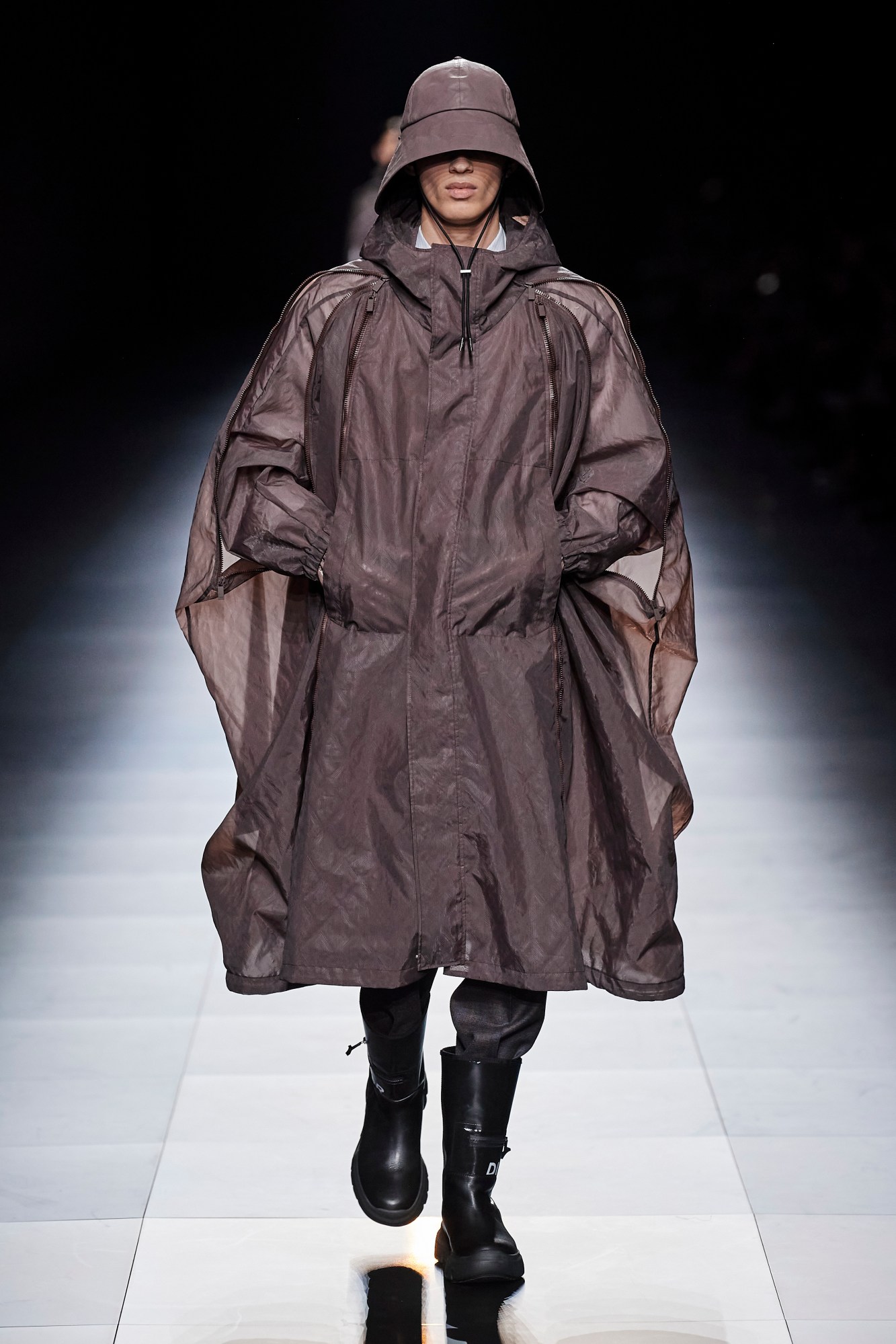
Credits
Images courtesy of Spotlight.
